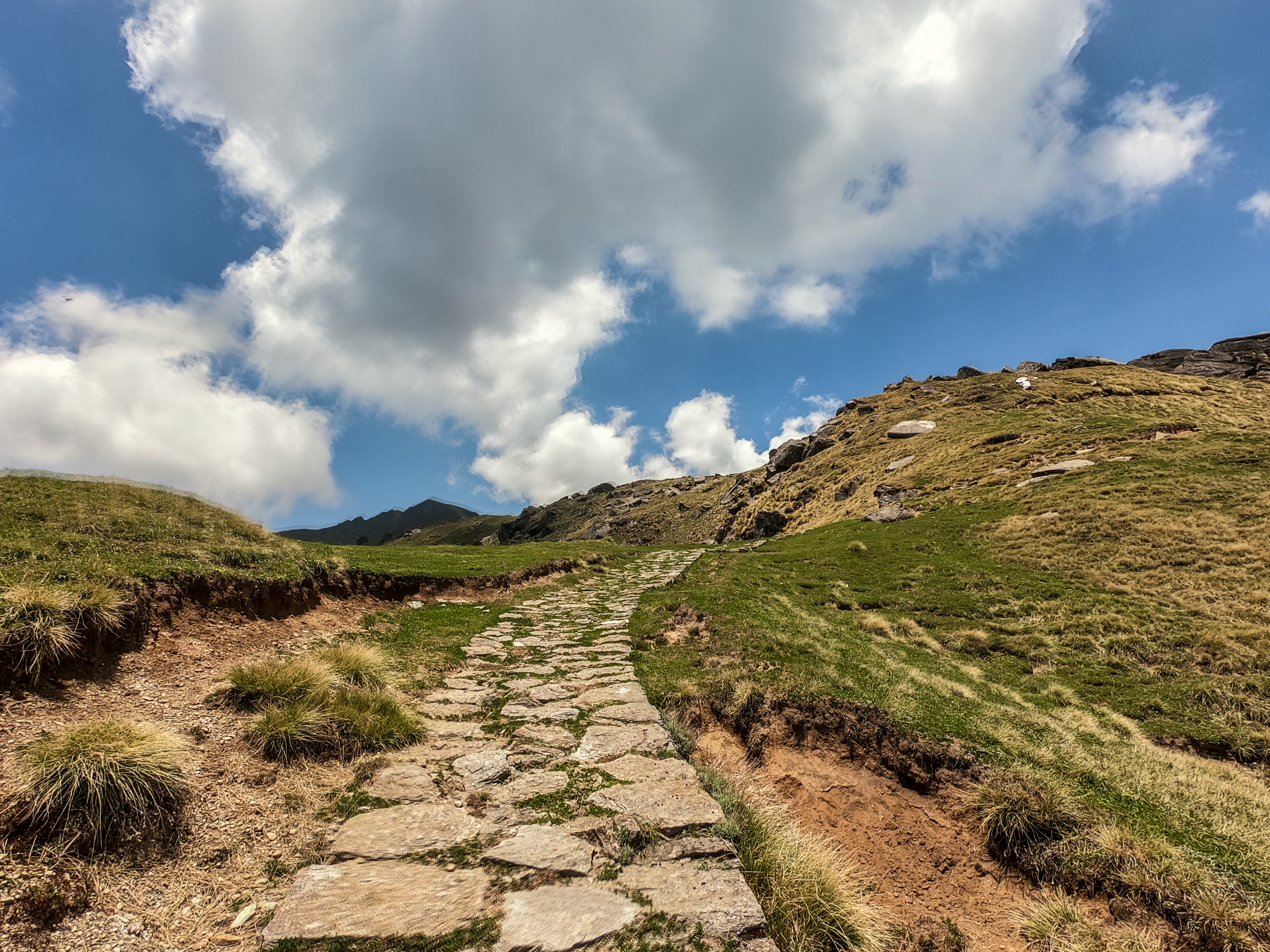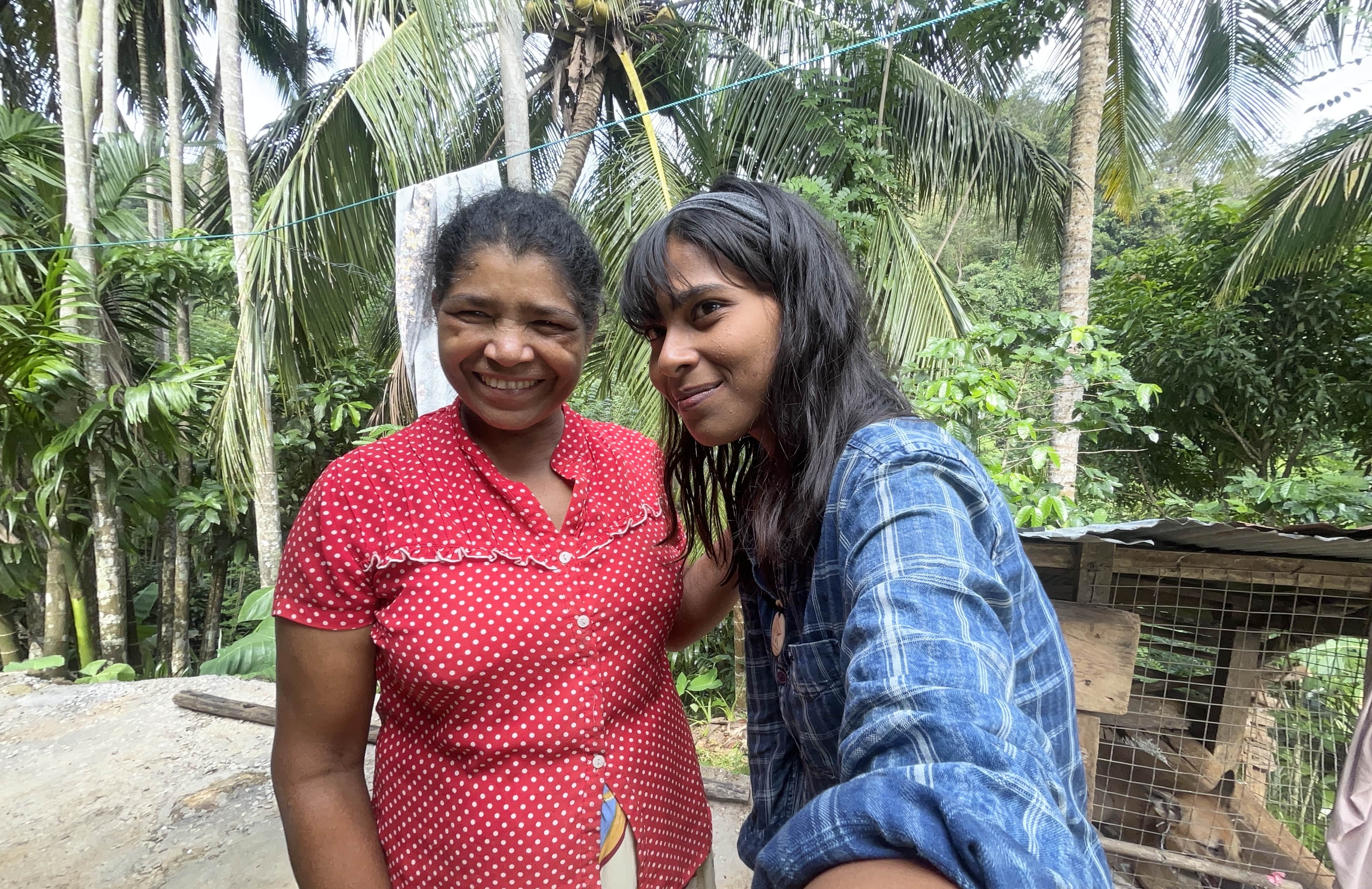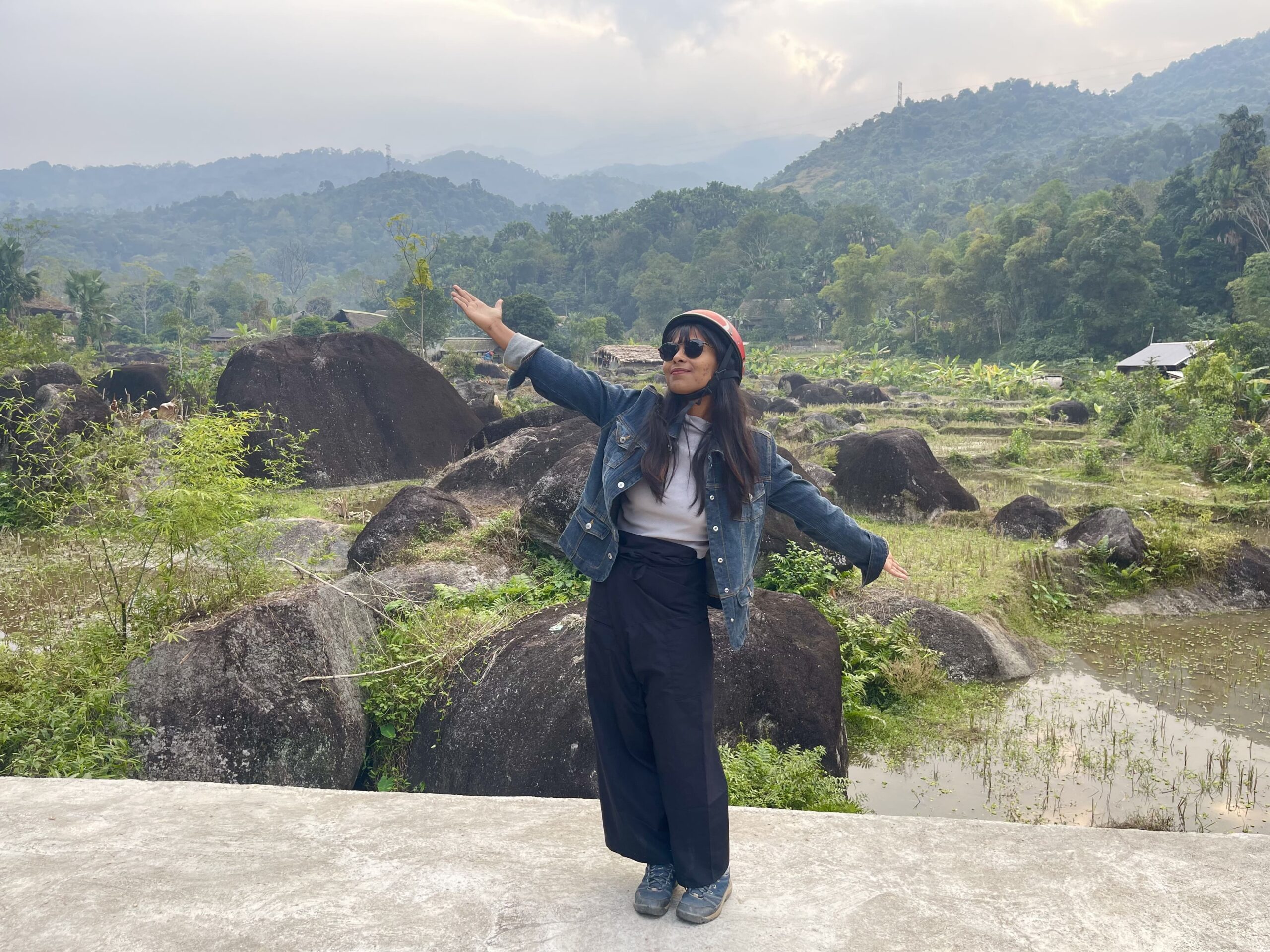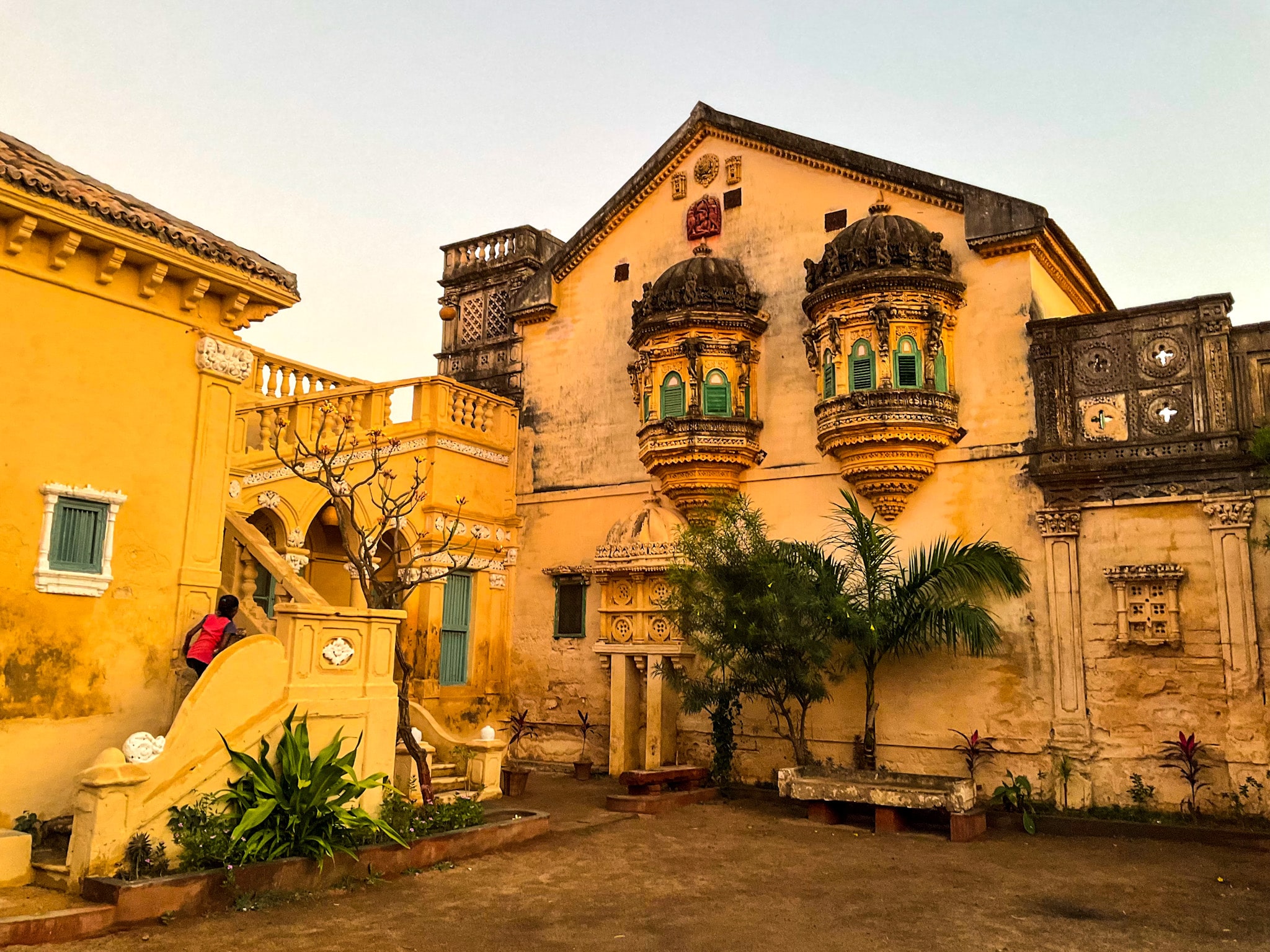In this travel guide, learn about the best places to visit in Munsyari – from Nanda Devi Temple to Khaliya Top Trek, from tribal history to trekking routes.
At an elevation of 7200 ft, this mountain-town is an amalgam of revenue villages in the Pithoragarh district consisting of five gram panchayats: Mallaghorpatta, Tallaghorpatta, Bunga, Sarmoli, and Jainti. In vernacular terms, ‘Munsyari’ means ‘place with snow’.

With the Gori River flowing through Johar Valley, this tiny hamlet is affluent in lush valleys, high-altitude glacier treks, and brushed-off history. Wide in tribal diversity and transhumance, the alpine villages in the upper parts rely heavily on agriculture and husbandry. Being the shelter of 319 birds (a quarter of India’s birds), it has been granted the label of ‘An Important Bird and Biodiversity Area’ (IBA) by BirdLife International.
Pithoragarh, as one of the three border districts in Uttarakhand (the other two being Chamoli and Uttarkashi), is a place of composure and viability. ‘Sometimes there’re so many tourists here that it hardly feels like Munsyari’, said the cook of the lodge I was staying at. But, I was fortunate enough to spend a month there without the divine intervention of the crowd the locals dread. Lockdown has been kind to me.

If you asked me an innocent question ‘What’s your favourite place in Uttarakhand?’, a few months ago I probably wouldn’t have been able to throw the dart to a single place. Every place stands out in its own charm, or not. I am not high on comparisons. But no matter how diplomatic I am about choosing a single place, truthfully and wholeheartedly, I can shout at the top of my voice, ‘It’s Munsyari!’ Now, don’t bother with reasons, because I can give you an exact (or not) set of reasons, but I won’t. Instead, here is a travel guide with a list of things you should do here and find your own reason.
On the edge lugs around the serpentine lanes that lead to Nanasen Village, the home to Tribal Heritage Museum, preserving the Bhotiya Culture. Pink, red, reddish-pink, pinkish-red and so many shades in between – the roses adorn the gates of the Kumaoni houses.
Best Things to Do in Munsyari
1. Watch the Panchachuli Peaks from Munsyari
It is not the kind of place you can just go and come, to and from, and vice versa. You can’t just visit the laid-down places and move on to the next destination. It’s a place to savour, to nourish, to breathe in. All of this suburban town is seized by the vast Nepal Ranges, Hansling Peaks, and the mighty Panchachuli Peaks. From Khaliya Top, peaks like Nanda Kot, Rajrambha are also visible.

I rented a room for a month in Munsyari. In that room, a glass wall would reflect against the spectacular grandeur of Panchachuli Peaks. Sometimes after two days of ceaseless rain, the five peaks of Panchachuli would reveal themselves like five cubes of ice, only the faded outlines separating the sky. Sometimes the peaks were so crisp and clear in their whites that they would sparkle in the stealth of the night. On some unlucky days that mostly felt lucky, there would be no peaks at all. All under the tyranny of the fog. During sunset, the last remnants of light would stick to the upper parts in a parallel line. They looked like two-tiered wedding cakes with the orange cream only on the first tier. It’s different every single day. Sometimes I would look up after a few minutes and find the pieces of the puzzle rearranged into a new puzzle. I would eat my pasta and watch the peaks, I would drink black coffee and watch the peaks, I would blame the huge pine tree for coming in the way and still watch the peaks from Munsyari. Some feelings are not caught in travel guides.

2. Hit the Random Trails and Surprise Yourself
This region is famous for Khaliya Top Trek and Milam Glacier Trek, yet you can notch it up and have adventures of your own. There’s a notorious number of trails on the outskirts without any predestination. Take morning strolls and find your own path. The vivid adventure I had, and also remains a cornerstone of my days, was a hike to a hidden riverbed. On my second day, I went for my usual morning walk, away from the main market, towards the more reclusive side. Bifurcating a carpet of green meadows was a rocky trail leading to ‘somewhere’. The ‘somewhere’s always amuse me. I followed the trail for ten-fifteen minutes and found myself completely secluded in a valley outside Munsyari. The trail was moving further, to a different ‘somewhere’, but I decided to come back the next day with packed lunch.

Incidentally, that trail is the inconspicuous path towards Nanda Devi Temple, not the regular one through Dhara Dhar Ridge.
Two days later, I was on the same trail again. With the horses and a local in sight, I eluded further into the valley, taking the precarious stairy path that literally looked like ‘stairway to heaven’ merging with the jungle afterwards. Just along the temple, another trail bends to the edge pushing the semi-vertical stairs further down. Before I knew it, I had already covered 3 km, chasing the sound of the water around Munsyari.
Malupati Village, with only four houses at one step or another, is a hidden rural gem near the riverbed. The river itself is possibly the extension of a waterfall (I wasn’t sure since the locals weren’t sure either).
3. Visit Nanda Devi Temple in Munsyari
Distance from the centre: 3 km
Decorated in a conical white structure, Nanda Devi Temple is the den for the worshippers of Nanda Devi or Parvati. Located 3 km away from the main market, Nanda Devi Temple can be reached by a small hike of 2 km from the bus station.
Instead of taking the road through the main market, ask the locals for the trail that’s more offbeat and moves past a jungle. You can always circle back through the Dhara Dhar Ridge path. Since the temple is cornered at the edge, you get a clear view of the Panchachuli Peaks from there.

4. Hike to Maheshwari Kund
Distance from the centre: 2 km
Maheshwari Kund, also known as Messar Kund, is a still pond on the Munsyari-Madkot Road. Located near Sarmoli Village, the kund tells fascinating folklore.
The locals believe that Yaksha, a demi-god, the resident of the pond, once fell head-over-heels in love with the daughter of the head of the village. The villagers, in denial of their budding love, dried out the waterbody. Grieved by this unforeseen cross-over, Yaksha cursed the villagers with the premonition of years of drought to come.
The villagers suffered from the wrath of the draught for many years, as predicted, before they finally apologized to Yaksha for their wrongdoing. Yaksha set them free at last.
The same trail ends in a waterfall in Munsyari, which you can climb down, and a village, Sarmoli, can so gracefully be embraced on the lap of the most promised view of Panchachuli Peaks. Just follow the waterline.
Also read – Covid, A Lie – The Ashram Folks in Kausani India
5. Learn about Bhotiya Culture from Tribal Heritage Museum

Distance from the centre: 2 km
Entry Fee: Rs. 20
Timing: 10 am to 5 pm
Tribal Heritage Museum propagates the exemplary notion of one man’s determination to keep the candles burning. Sher Singh Pangtey, a history professor specialising in Bhotiya Culture, walked up to 14 tribal villages to collect artifacts dating back to the 1900s.
Bhotiya, or Shauka Tribe, was a colloquial ethno-linguistic nomadic tribe residing in the upper Himalayan valleys, relying solely on their trade-relations with Tibet. They were the fuel of the Indo-China trade route, well-known as the Kailash-Mansarovar route now. Their barter was pegged on the exchange of jaggery, mishri, and grains in return for salt, borax, and wool from Tibet, until 1962. The Indo-China war in 1962 resulted in the closing of the border. The Johari people had to retire from their primary means of livelihood and delve into the Kumaoni culture and language. The seasonal migration lost its meaning with the disruption in the economy.
All their wooden possessions soon were replaced by steel (with the making of the road in the 1960s, modernity began to flash wee secrets of modernization), and with the course of time, plastic. On the edge of such obscure times, Sher Singh Pangtey roamed around the villages, putting together the invaluable pieces, soon-to-be units of history.
In 2000, Tribal Heritage Museum in Munsyari got established showcasing bags of yak skin, wooden utensils such as spoons, cooking pots, wine bottles, brass hookah, jewellery fashioned in bear’s nails, and inscribed stones with Buddhist wisdom.
The museum itself is more like a traditional Kumaoni house. The doors and windows are also the remnants preserved from the high-altitude tribal villages. Taal (key) and gareli (lock) – two of the indigenous elements in the ancient doors which did not require the convene method of locking out doors are also here for demonstration.
6. Explore Nanasen Village near Munsyari

The edge of this tiny town is known as ‘Munsyari – The Last Frontier’. On the edge lugs around the serpentine lanes that lead to Nanasen Village, the home to Tribal Heritage Museum, preserving the Bhotiya Culture. Pink, red, reddish-pink, pinkish-red and so many shades in between – the roses adorn the gates of the Kumaoni houses. The flower buds decorate every door in such a way that it looks like every house is part of a carnival. The traditional Kumaoni houses have the grandeur of garlands semi-circled at every entrance, this being the Kumaoni signature. And the stairs never failed to put me in awe. The Kumaoni stairs are one of the most beautiful things in all of Uttarakhand.
Also read – The Loveliest Valley of Flowers Trek in the Himalayas
Trekking around Munsyari
Want to trek around Munsyari? In this travel guide, you will find two treks which you can explore around.
1. Khaliya Top is A One-Day Hike
Situated at an elevation of 3500 meters and 8 km away from the base, Khaliya Top Trek moves upwards through an easily navigated trail amid the forest. There’re four marking points all the way up to the top: the base itself, the KMVN Rest House midway, and two more points after that (one of them being the ‘Zero Point’). The KMVN Rest House can be reached within two hours, depending on your pace. That first stretch of two hours would meander through a thick and opaque forest, home to various species of birds and animals. The bird callings would only aggravate with the aggravation of your pace.

Ghurar, yellow-fronted marten, Monal, and Kakar (Barking Deer) are frequent in this part of Munsyari. A man from the forest department, whom I met later at the rest house, told me that bears are in the spontaneous habit of making guest appearances near the rest house. On my way back, a herd of sheep with green horns slowed me down in the rain. Bharal, known as the blue sheep, is a common breed in the Upper Himalayas. The natives consider them mountain goats, but they are not really goats.
Also read – Khaliya Top Trek – The Best One-Day Trek
The locals believe that Yaksha, a demi-god, the resident of the pond, once fell head-over-heels in love with the daughter of the head of the village. The villagers, in denial of their budding love, dried out the waterbody. Grieved by this unforeseen cross-over, Yaksha cursed the villagers with the premonition of years of drought to come.
2. Panchachuli Base Camp Trek
Panchachuli, derived from Pandava’s ‘five cooking hearths’, is a string of five snow-peaked mountains in the Eastern Kumaon region of Uttarakhand. Panchachuli Peaks are omnipresent from most of Pithoragarh district, a scenic status quo beheld from all over, and of course, the base of it all, Darma Valley. Years back, this trek used to take nine days on foot from Munsyari and there was no provision for vehicle-friendly roads connecting a traveller all the way up to Dugtu. But now, one can reach as far as Darma Valley on a vehicle and trek for only 2 km to plaque on Panchachuli Base Camp.

How to Reach Munsyari
By road: Munsyari is well connected via local buses and cabs to various cities in Uttarakhand. The bus that runs from Haldwani reaches Bageshwar at 9 am every day. You can opt for the bus either from Haldwani or Bageshwar. For that, you need to reach Haldwani first. 5 km away from Haldwani is the Kathgodam railway station. The railway station is well-connected with all the major cities.
By train: The nearest railway stations are Kathgodam (275 km) and Tanakpur (286 km). Cabs and local buses run up every town in Uttarakhand.
By air: The nearest airport is Pantanagar Airport (249 km).
Where to Stay in Munsyari

- Pandey Lodge (Rs. 300-1000 per day, Rs. 4000-10000 per month, contact no – 7248433365)
- Snow View Inn (Rs. 500 per night, contact no – 9456543592)
- Sahara Homestay (Rs. 500 per day).
In this travel guide, I’ve covered all the places to visit in Munsyari, how to reach, where to stay, and the unforgettable time I have spent there.
Do you want to add anything else to the Munsyari travel guide? Let me know!
Support my solo adventures around the globe by joining the Patreon community.
Live the Adventure
Get weekly articles delivered to your doorstep and stay up-to-date with my new travel stories.





Leave a Reply